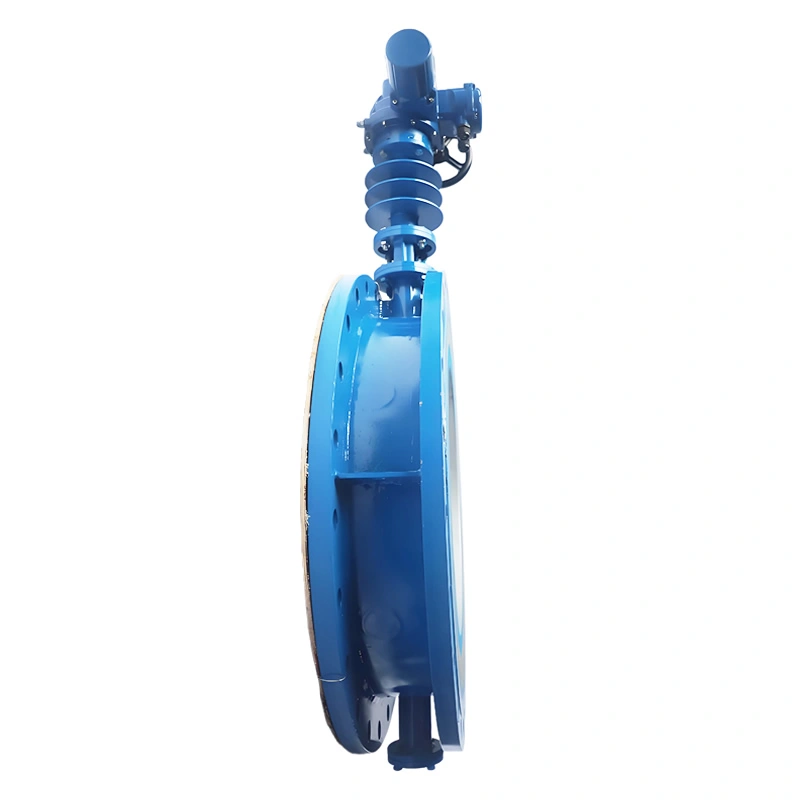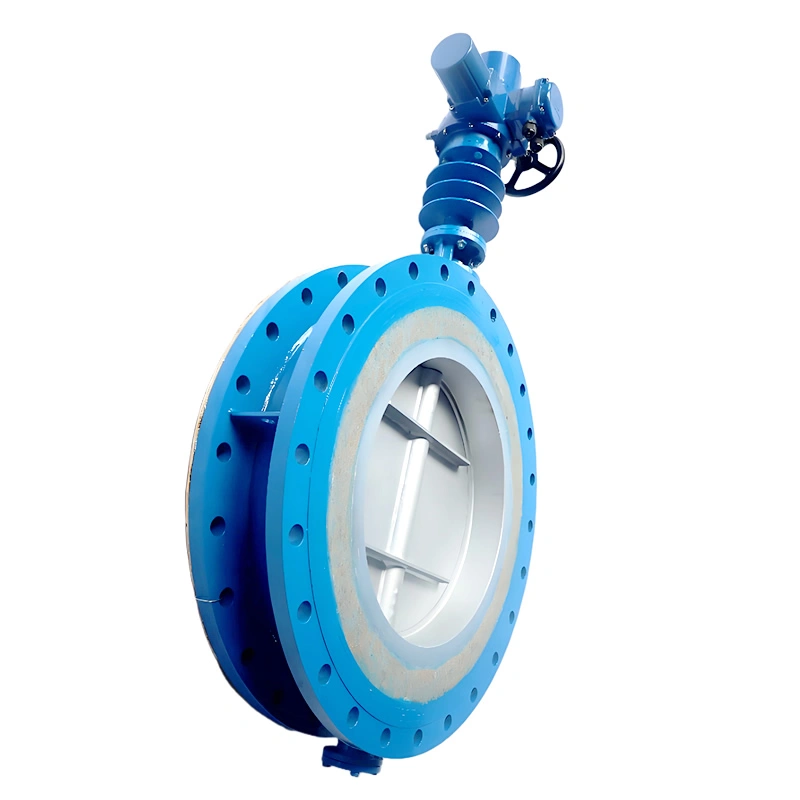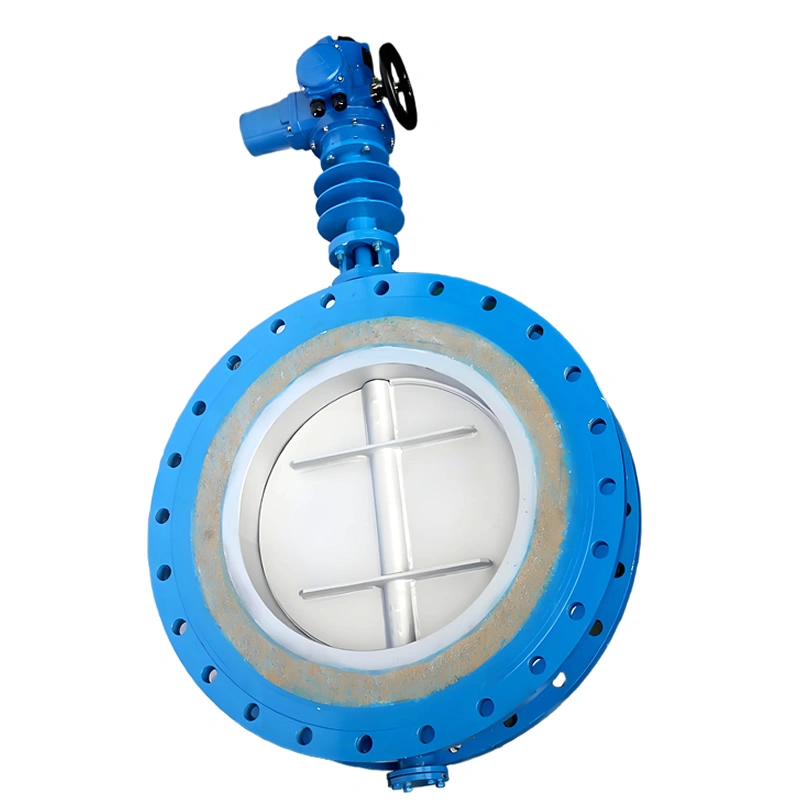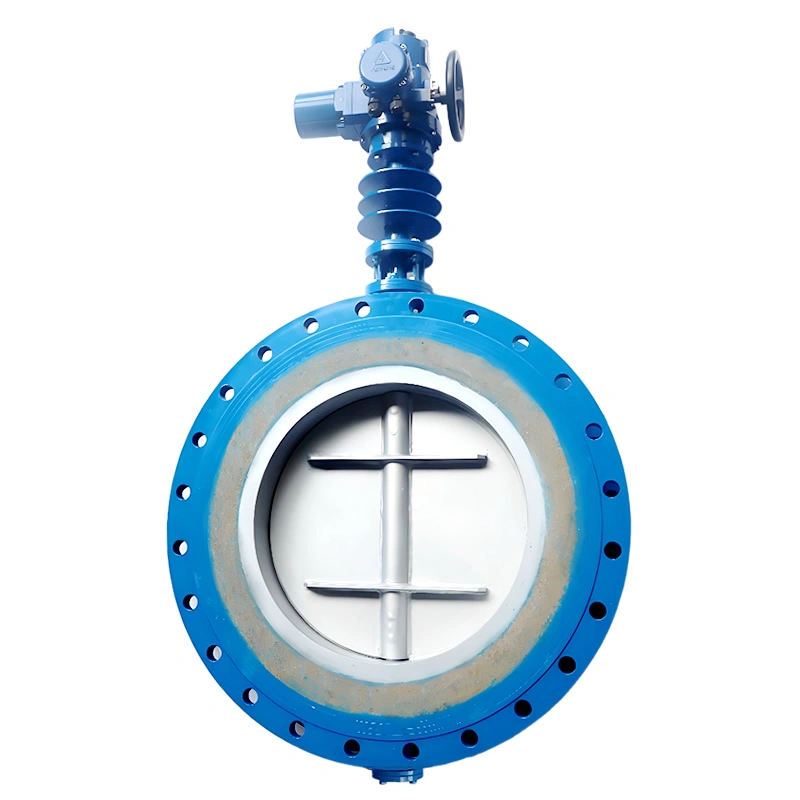- DN100 ~ DN1200
- Class 800
- API 609, ASME B16.34, ASME B16.5, MSS SP-67
- SS321
- Raised face flange (ASME B16.5)
- -20℃ ~ 600℃
- API 598 Class IV (seat)
Specification
DN600 800LB PN10 SS321 High Temperature Hard Seal Butterfly Valve
I. Product Overview
Newway high-temperature hard-seal flanged butterfly valve is a precision-engineered industrial valve designed for reliable flow control in high-pressure, high-temperature ventilation and process systems. Featuring a DN600 size, 800LB pressure rating, and construction from SS321 stainless steel (for both body and disc), this valve combines robust materials with a hard-seal design to ensure leak-tight performance in demanding environments. Equipped with flanged connections (RF) and electric actuation (with manual override), it caters to applications involving hot gases, flue gas, and high-temperature industrial fluids—ideal for power plants, steel mills, chemical processing, and HVAC systems where thermal stability and durable sealing are critical.
II. Key Attributes and Specification Parameters
Basic Attributes
Structure Design: Concentric butterfly valve with a single-piece SS321 disc rotating within a SS321 body. The disc features a streamlined profile to minimize pressure drop, while the hard-seal mechanism (metal-to-metal seating) ensures tight shutoff.
Body Material: SS321 stainless steel (ASTM A240), selected for its exceptional high-temperature strength (up to 800℃) and resistance to oxidation, scaling, and intergranular corrosion—critical for withstanding prolonged exposure to hot gases.
Disc Material: SS321 stainless steel, matching the body for material compatibility and thermal expansion consistency, which prevents warping or sealing failure under temperature fluctuations.
Sealing System: Hard-seal (metal-to-metal) design, where the disc seals against a precision-machined metal seat. The seat is surfaced with a wear-resistant alloy (e.g., Stellite) to enhance durability and sealing integrity over thousands of cycles.
Pressure Rating: 800LB (ASME Class 800), suitable for high-pressure industrial systems including steam pipelines, gas turbines, and pressurized ventilation ducts.
Temperature Range: -20℃ to 800℃, accommodating extreme heat from flue gas, superheated steam, or industrial process exhaust.
Nominal Diameter: DN600, catering to large-diameter pipeline requirements for high-flow ventilation and process applications.
Connection Type: Raised face (RF) flanged connections per ASME B16.5, ensuring compatibility with global pipeline flanges. Flanges are drilled to match standard bolt patterns for secure, leak-free installation.
Operation Mode: Electric actuation with manual handwheel override. The electric actuator provides precise control (±1° positioning accuracy) and can be integrated into automated systems, while the handwheel enables manual operation during power outages or maintenance.
Media Compatibility: Hot gases (flue gas, combustion air), superheated steam, high-temperature industrial fluids, and abrasive media—SS321’s corrosion and wear resistance make it suitable for harsh environments.
Design Standards: Complies with API 609, ASME B16.34, and ASME B16.5, ensuring adherence to international quality and safety norms for butterfly valves.
Product Overview
III. Product Features
Newway high-temperature hard-seal butterfly valve integrates advanced engineering with high-temperature performance:
Hard-Seal Reliability: The metal-to-metal sealing system achieves API 598 Class IV leakage rates (low leakage) even under high pressure and temperature, preventing costly media loss or environmental contamination in power and chemical plants.
SS321 Durability: SS321 stainless steel (with titanium stabilization) resists intergranular corrosion during welding or high-temperature exposure, ensuring structural integrity and sealing performance over the valve’s lifespan.
High-Temperature Stability: The valve’s design accounts for thermal expansion—matching body and disc materials, plus precision machining of sealing surfaces—preventing binding or leakage as temperatures fluctuate.
Low Flow Resistance: The disc’s streamlined shape and full-port design minimize pressure drop, reducing energy consumption in ventilation systems (e.g., HVAC air handlers) or process gas pipelines.
Dual Operation Flexibility: Electric actuation enables remote, automated control (ideal for integrating into SCADA systems), while manual override ensures operational reliability during power failures or actuator maintenance.
Easy Maintenance: The valve’s modular construction allows for quick disassembly and seat/disc replacement without removing the entire valve from the pipeline, reducing downtime in critical applications.
IV. Manufacturing Process
Newway adheres to strict manufacturing protocols to ensure the quality and performance of its high-temperature butterfly valves:
Material Selection and Testing: SS321 stainless steel plates undergo chemical composition analysis (verified for chromium, nickel, titanium content) and mechanical testing (tensile strength, elongation) to meet ASTM A240 standards. Each batch is inspected for intergranular corrosion resistance via ASTM A262 Practice E.
Precision Machining: Valve bodies and discs are CNC-machined to tight tolerances (±0.02mm for sealing surfaces) to ensure proper metal-to-metal contact. The body’s sealing seat is overlay-welded with Stellite alloy, then ground to a mirror finish (Ra ≤0.8μm).
Heat Treatment: After machining, components undergo solution annealing (1040–1120℃) to restore SS321’s corrosion resistance and relieve machining stresses, critical for maintaining dimensional stability at high temperatures.
Assembly and Calibration: The disc is mounted on a precision shaft (SS316 for added corrosion resistance), with bearings selected for high-temperature operation. Electric actuators are calibrated to match the valve’s torque requirements, with manual handwheels installed for backup operation.
Testing and Quality Control: Each valve undergoes:
Hydrostatic shell test: 1.5×800LB pressure to verify body integrity, with no visible leakage.
Seat leakage test: 1.1×800LB pressure using air or inert gas, ensuring leakage rates meet API 598 Class IV standards.
High-temperature cycle test: 100+ cycles of heating to 800℃ and cooling to ambient temperature, verifying sealing and structural stability.




